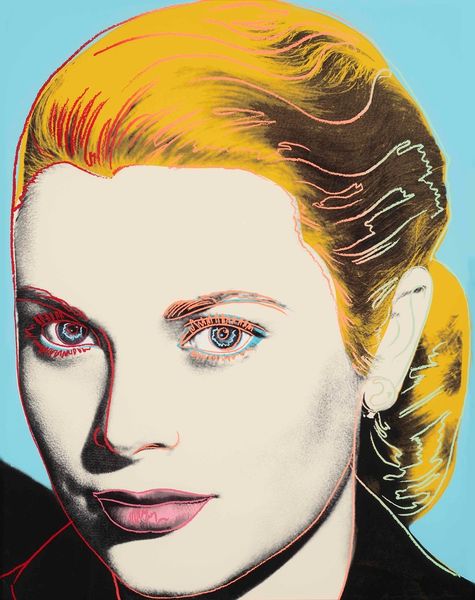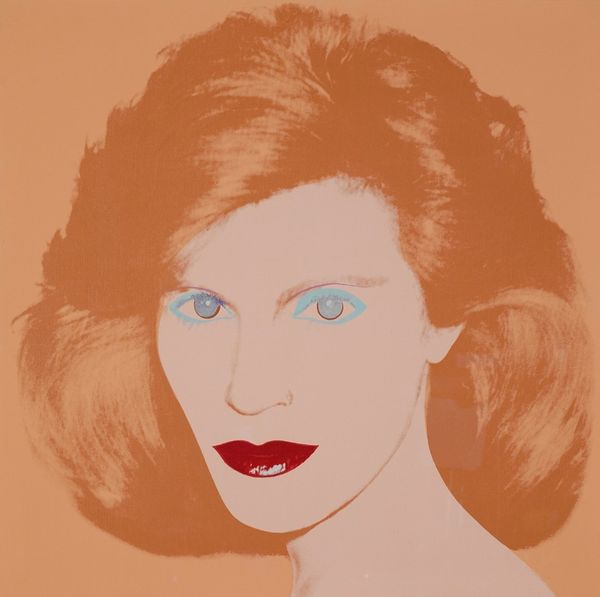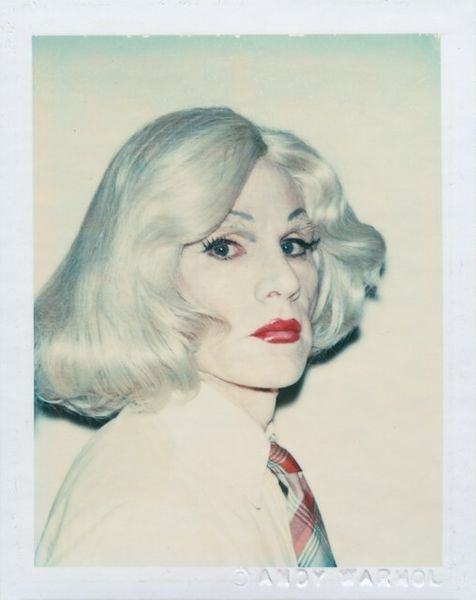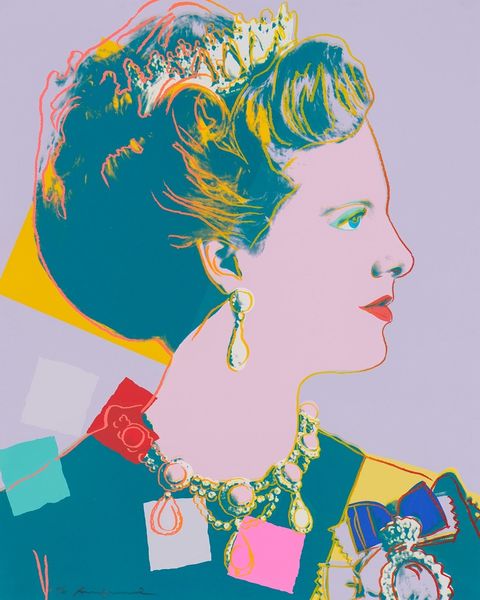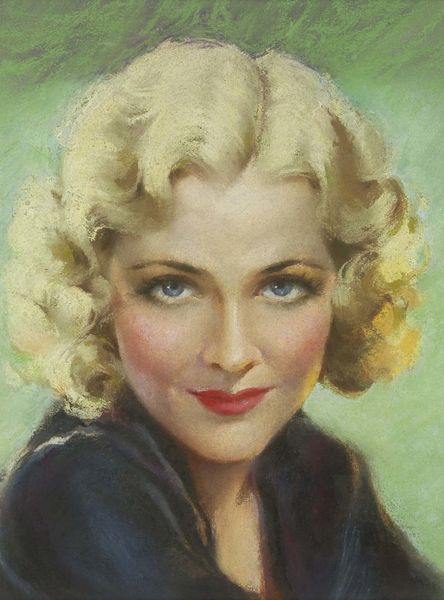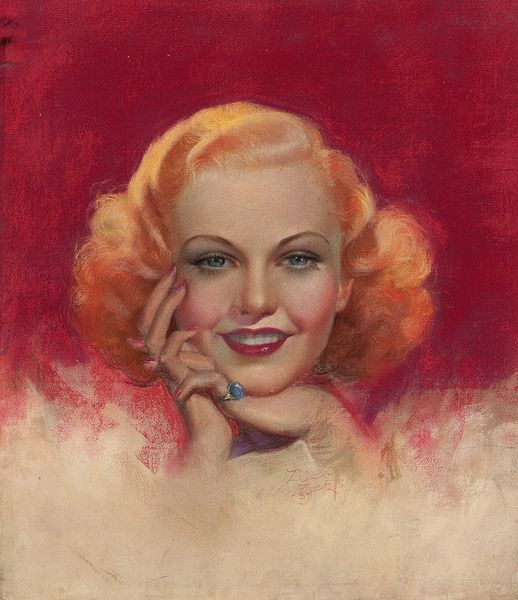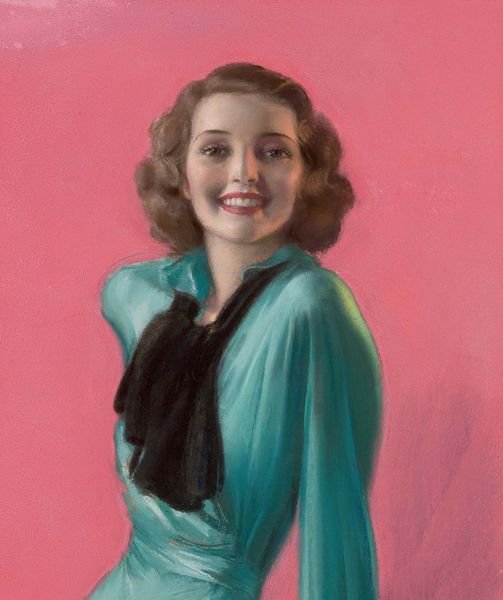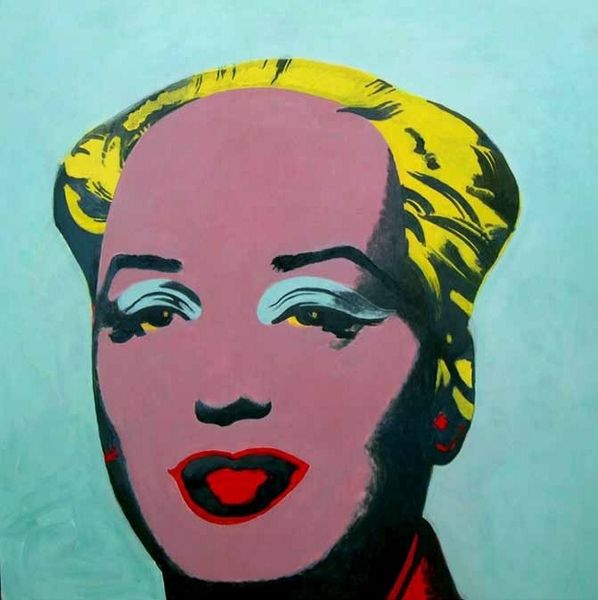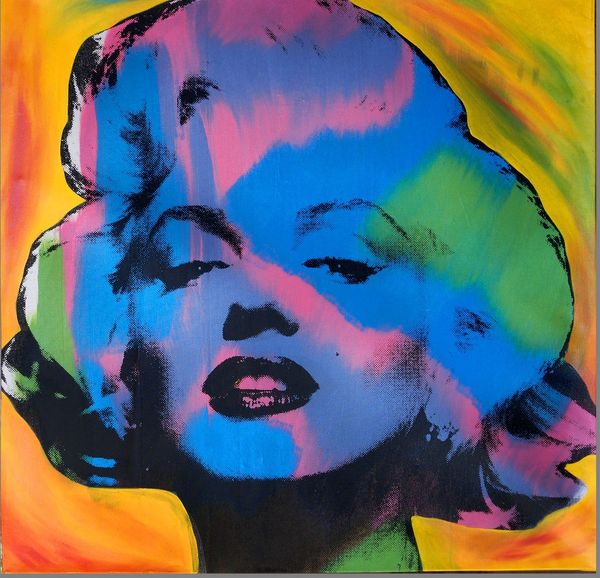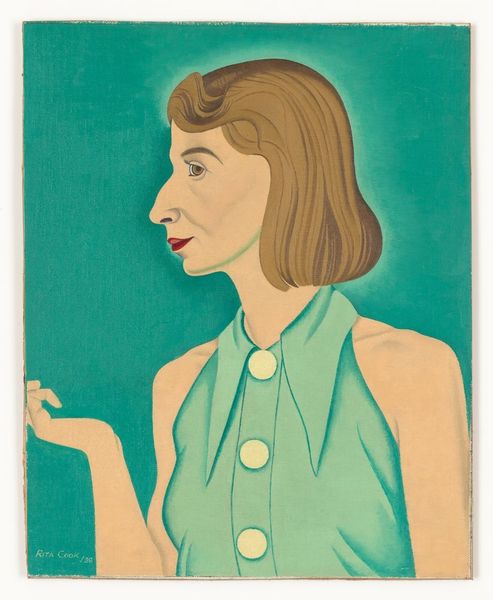
Copyright: Modern Artists: Artvee
Curator: Here we have Andy Warhol's "With Hat," completed in 1983. The medium is acrylic paint, typical of Warhol's pop art style. Editor: My initial impression is one of slight melancholy, wouldn’t you say? The vibrant colors almost belie a wistful gaze. There’s a striking contrast between the cheerful pink hat and the woman’s seemingly distant expression. Curator: That contrast is crucial. Warhol consistently challenged the idea of authenticity, even in portraiture. Consider the sitter—her identity is less important than the representation itself. The hat functions as both a glamorous accessory and a shield, subtly disrupting the male gaze and reclaiming female identity within a pop-art framework. Editor: Precisely! The hat as a semiotic device... It obscures, while simultaneously drawing attention. Hats have always been associated with status and femininity; what does it mean for Warhol to exaggerate its form and color like this? Is he commenting on the performativity of femininity, turning the wearer into an icon? Curator: I think he is. Warhol deliberately flattens emotional depth, using recognizable imagery and commodifying it. "With Hat" invites a conversation about celebrity culture, art as commerce, and how society consumes images of women. It's the mass-produced image of a starlet we perceive before her actual persona. Editor: Yes, it’s about surface and appearance. It's a potent statement. These are not simply aesthetic choices; they reflect the psychological landscape of the media-saturated 1980s. One cannot overlook the cool, almost aloof nature this piece cultivates with color to render mood in such an iconic way. It does feel remarkably of the era. Curator: The way Warhol manipulates the medium echoes his message. There is no grand illusionism to hide behind: acrylic on canvas; bold lines; bold, unmodulated color—what do we make of it, after all? It forces a critical assessment of power structures operating through representation. Editor: I’m left contemplating the dual role of the subject: both as a unique individual, yet forever an endlessly reproducible commodity. That tension is palpable. Curator: And that tension continues to be highly relevant today, wouldn't you say?
Comments
No comments
Be the first to comment and join the conversation on the ultimate creative platform.


